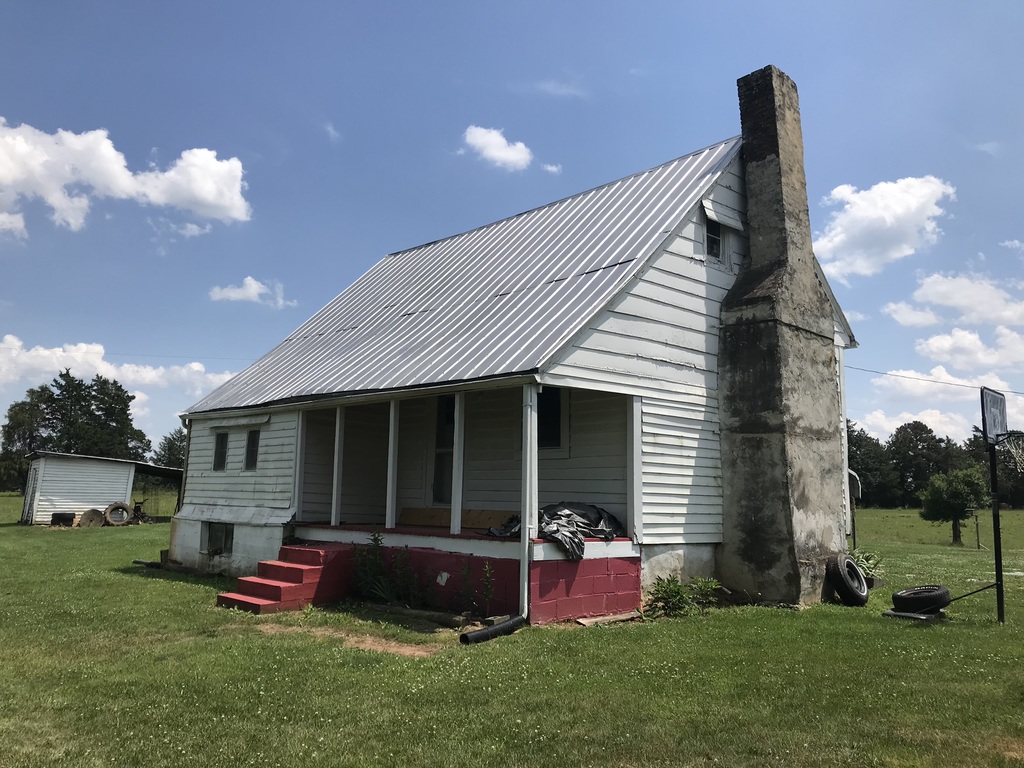
Brown’s Tavern, 2019 Photo by Kyle Griffith
This property dates to the early 19th century and served as a sizeable tobacco farm owned by the Brown family of Pittsylvania County, Virginia. Here in the 1840’s, Mildred D. Brown operated a rural tavern where she offered wholesome meals and a place to lodge guests for the night. Mrs. Brown’s Tavern was conveniently situated along a new stagecoach road between Danville and Lynchburg. The building is situated near the Stinking River, the community of Chalk Level, and not too far from the town of Gretna. This historic site deserves to be preserved and possibly restored to retain more accurate historical materials. It is a rare example of rural business during the Federal period of the U.S., similar to that of Yates Tavern several miles to the west. Brown’s Tavern is on private property and I had permission to visit and photograph the site with fellow members of the Pittsylvania County Historical Society in 2019.
As part of the Works Process Administration in the 1930’s, the Virginia Historical Inventory (VHI) surveyed this site and estimated the date of construction between 1800-1813. Read the original surveys here:
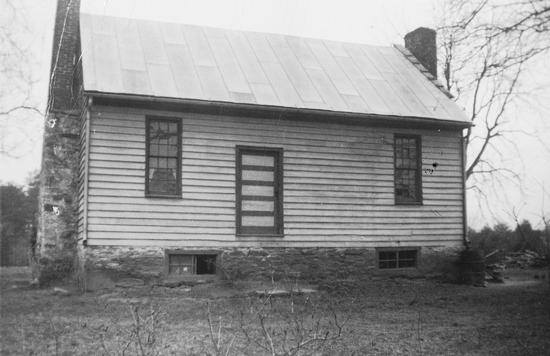
VHI Project. Works Progress Administration
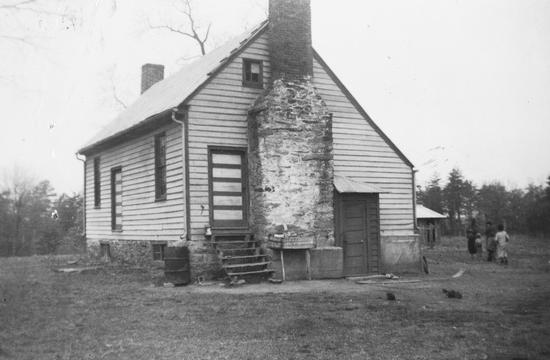
VHI Project. Works Progress Administration
Property History
The original owner, John E. Brown (1783-1843) obtained this property in 1813 and held it for the remainder of his life. Here, John and his wife Mildred Desmukes Brown (~1785-1858) raised about seven children together. (William L., Lock, Ann T., Elizabeth C., Sallie, Susan, and John R.). Census records indicate that there were also between nine and twelve enslaved people on the property during the 1820’s and 1830’s. The survey report tells of a nearby cemetery for the enslaved people that consisted of unmarked fieldstone markers. John E. Brown died in 1843 and was buried in the family cemetery nearby. He willed the property to his wife Mildred and asked that their son John Richard Brown (1822-1845) would stay and take care of her. However, two years later, John Richard also passed away, leaving his mother at home without her husband or her son. He had just married earlier in the year to Emily Waller (1825-1909) and was expecting a baby. Soon afterward, the newborn was named John Richard Brown, Jr. (1845-1927). He was raised on the farm of his maternal grandfather, Robert Waller, who owned profitable land near the town of Chatham. His neighbors included physician Chesley Martin and his son Rawley White Martin. Also close by lived George Gilmer, a local lawyer, as well as the clerk of court Mr. William Tunstall.
The VHI report states that Mildred operated the building as a tavern for financial support after she became widowed. The property stayed in her possession between 1843 and 1850, so this is the main period of significance. The 1850 census shows Mildred as a widow in her 60’s, an owner of valuable land who has hired a young laborer, Edward Adkerson, for work. The neighboring home belonged to Mr. Lorenzo Shelton who worked as an overseer. He likely supervised the work of the enslaved people on the Brown’s property. Mrs. Brown owned 317 acres of land in all. The 1850 agricultural census assessed the property as follows:
- 200 Improved Acres
- 117 Unimproved Acres
- $1,900 Cash Value of Farms
- $25 Value of Farming Implements and Machinery
- 2 Horses
- 6 Milk Cows
- 2 Work Oxen
- 6 Other Cattle
- 20 Sheep
- 20 Swine
- $150 Value of Livestock
- $98 Value of Animals Slaughtered
- 180 Bushels of Wheat
- 500 Bushels of Indian Corn
- 250 Bushels of Oats
- 2,800 Pounds of Tobacco
- 30 Pounds of Wool
- 5 Bushels of Irish Potatoes
- 20 Bushels of Sweet Potatoes
- 100 Pounds of Butter
- 10 Pounds of Flax
- 2 Bushels of Flax Seeds
- $25 Value of Homemade Manufactures
In the event that John Richard Brown, Sr. had not passed away in 1845, it is likely that he would have inherited the property and possibly continued the operation of his mother’s tavern. For the benefit of John Richard, Jr., until he came of age, the property passed to his maternal uncle William Waller in 1850. Mildred passed away eight years later and was buried in the family cemetery near the tavern.
During the American Civil War, John Richard, Jr. joined the Confederate States Army at the age of eighteen and served with the 6th Virginia Cavalry. When he reached twenty-two years of age he acquired the Brown property from William Waller and it stayed in his possession between 1867-1888. In the 1880 census, Brown was married to Harriet Matthews and lived with his father-in-law, Rev. William Matthews, working as a tanner just north of Chatham. In 1888 the Brown property was sold to prominent local businessman J. H. Hargrave, who held onto it for several years. There were no additional children through this line of the Brown family to inherit the property.
In 1900, the census indicates Brown had moved into the town of Chatham and was working as an auctioneer (likely at one of the local tobacco warehouses). He boarded at the home of his first cousin and fellow veteran James Wyatt Whitehead (1838-1919) who was a prominent merchant in town. Whitehead’s mother, Elizabeth C. Brown (1814-1850) and his father, Richard Whitehead, Jr. (1807-1851) are buried in the Brown cemetery near the tavern. [Richard Whitehead, Sr. (1773-1843) is an ancestor to Kyle Griffith]. By 1910 Brown worked as a deputy sheriff for Pittsylvania County and lived next door to Chatham attorney Nathaniel Clement & historian Maud Carter Clement (1879-1969). He lived a long life of about eighty-one years and was buried in Chatham Burial Park with a large granite tombstone.
Architectural Information from 1937 Survey
- Eight rooms in all
- Two rooms upstairs
- Three rock walled rooms in basement including a kitchen and dining room
- First floor contains open room with large fireplace
- Shutters have been removed
- Front porch and additional rooms have been removed
- Sixteen windows (Some have likely been covered since then)
- Ceilings approx. 10ft tall
Documentation Photos
Photos taken by Kyle Griffith in May 2019.
Regarding the reproduction or use of photographs from Griffith Preservation,
please contact [email protected] to obtain necessary permissions.
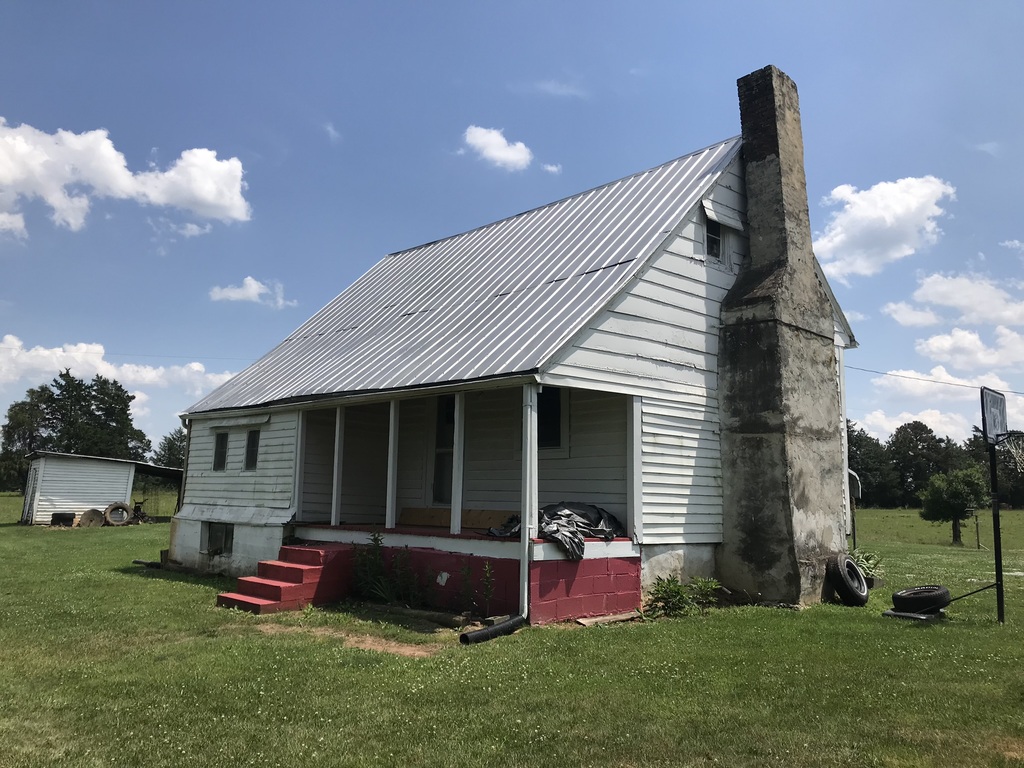
Brown’s Tavern, view to the southeast. The building has many modern features, including a cinderblock porch and a metal roof. The rock chimney on the west end has been coated over with cement.
Brown’s Tavern, view to the south.
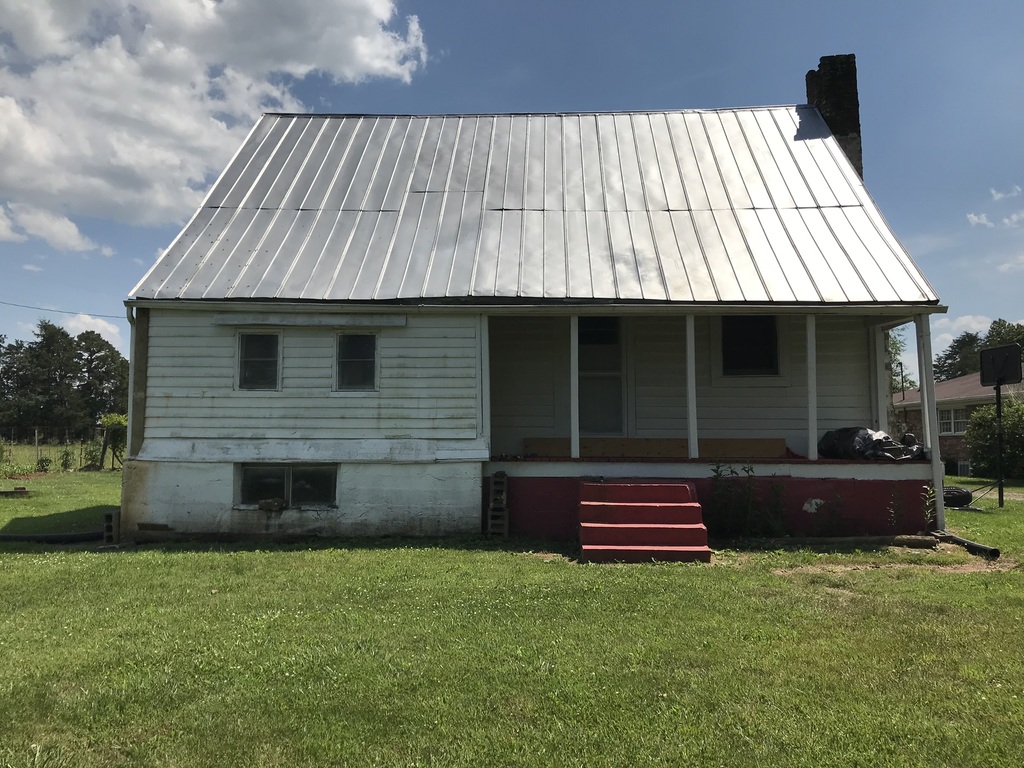
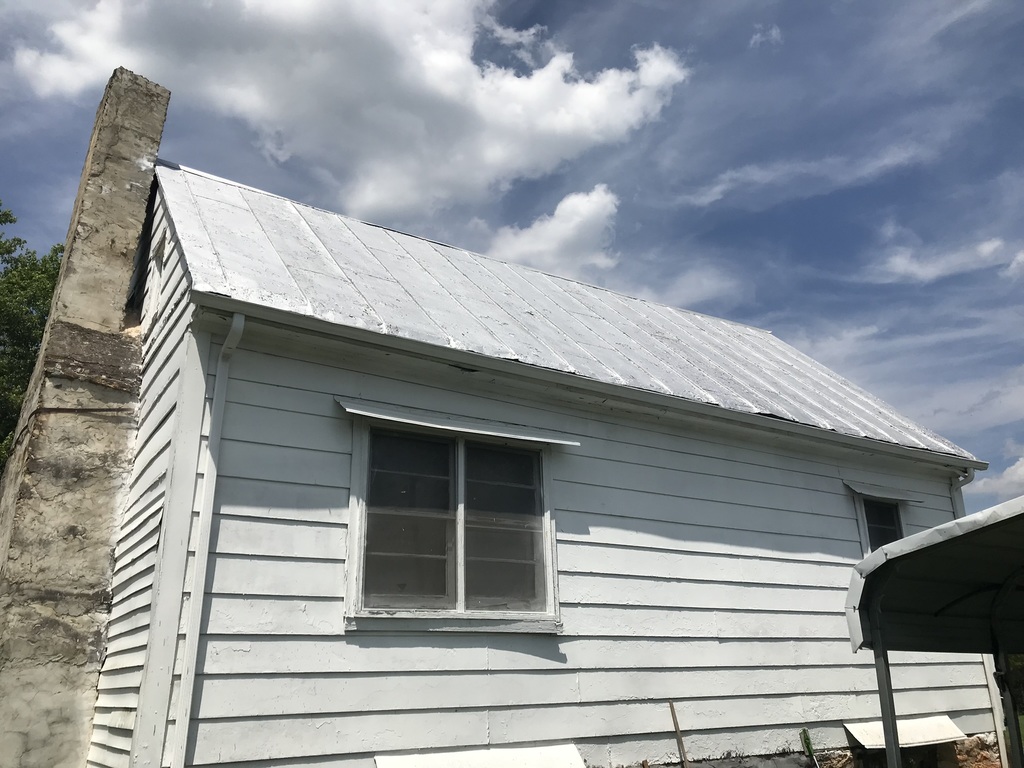
Brown’s Tavern, view to the northeast. The windows have been altered and the doorway has been closed up since the 1930’s survey photos. There was likely a porch here during its use as a tavern. Also a small metal roof shelter has been built close to the front of the building.
The foundation of the building is locally sourced stone. It has been coated with several materials over time, but a bit of the stone is visible in this section.

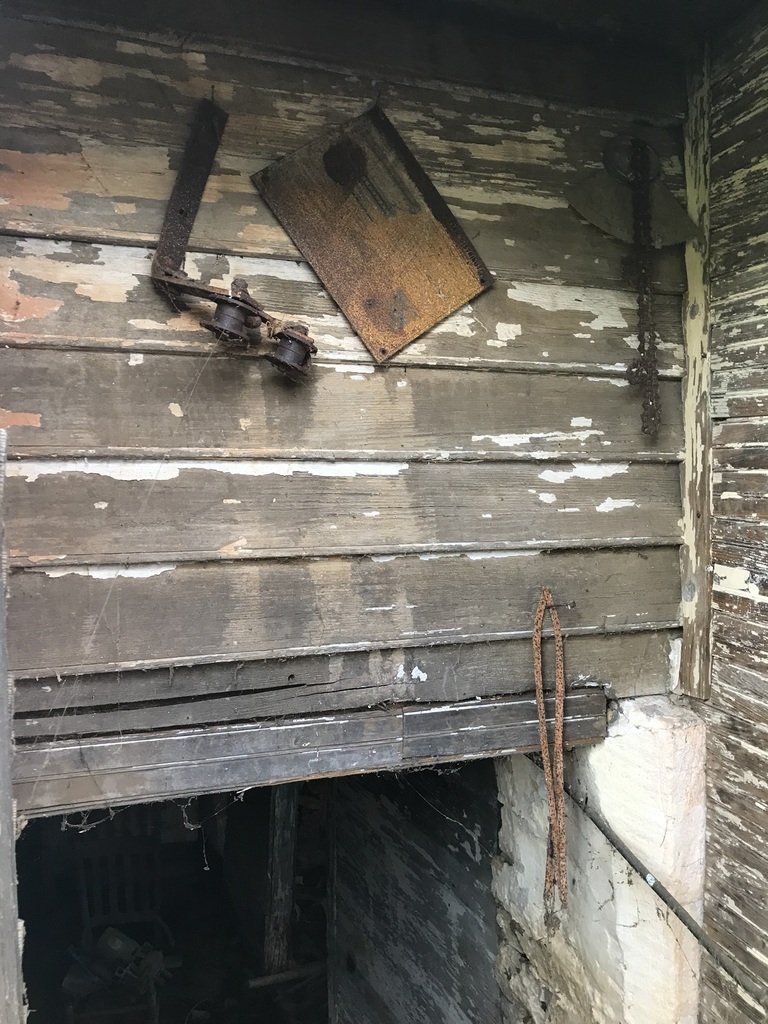
The exterior entrance down to the basement reveals some of the very old siding of the house, on which the worn off paint reveals the plain wood siding.
Part of the chimney on the east end has been damaged. The brick stack atop the fieldstone is lost and a metal roof has been added over the remaining portion. The small door to the right enters into the basement. The door is very old and difficult for the owner to pry open.


The burial ground where the Brown family rests is known officially as the Monroe-Tate Cemetery. It is guarded by a wide perimeter of impressive squared masonry. There is no gate, but a masonry stairway over the wall.
The stones protrude from the ground together in straight rows, ordered from the most ancient unmarked fieldstones, early carved stones, to early 20th century stones. Outside of the wall, the cemetery is still an active burial site. Since these photos there has been at least one more burial here.
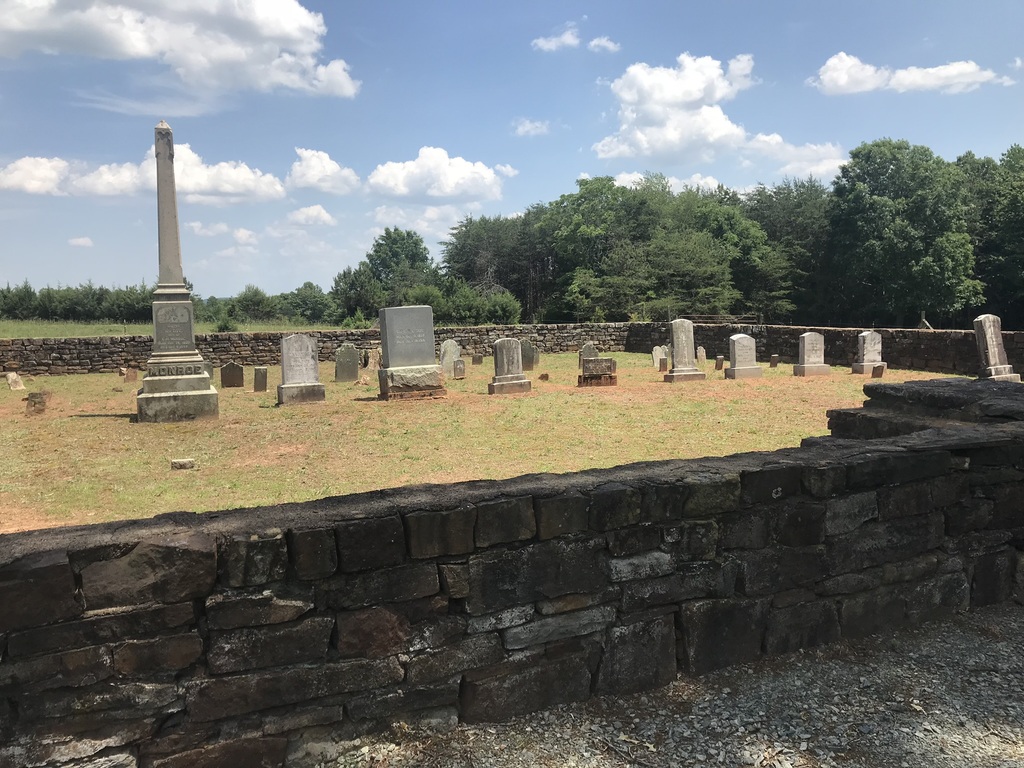
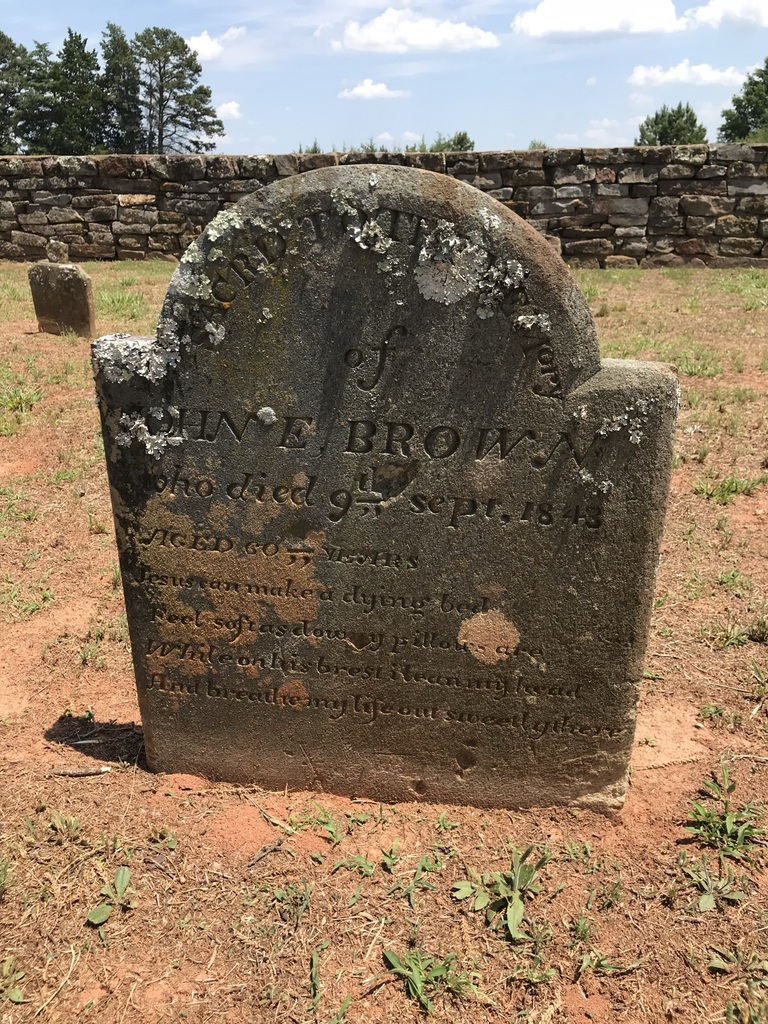
The grave of the original landowner, John E. Brown. His stone is inscribed with an old hymn:
“Jesus can make a dying bed
Feel soft as downy pillows are
While on His brest [sic] i lean my head
And breathe my life out sweetly there”
The grave of the tavernkeeper, Mildred Desmukes Brown. The heading “Sacred to the Memory of…” was very common in mid-nineteenth century inscriptions.

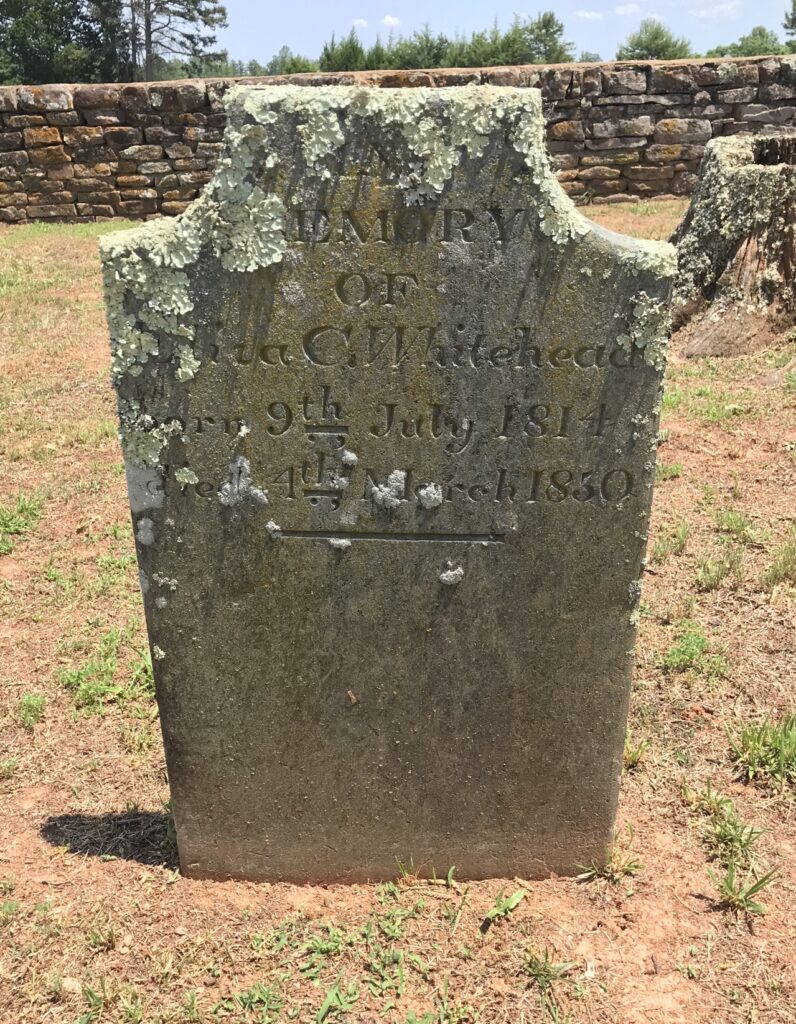
The grave of Eliza Caroline Brown Whitehead (1814-1850), wife of Richard Whitehead, Jr. Much of this stone and some of the others are partly obscured by lichen growth.
The grave of Richard Whitehead, Jr., a brother-in-law of tavernkeeper Mildred Brown.
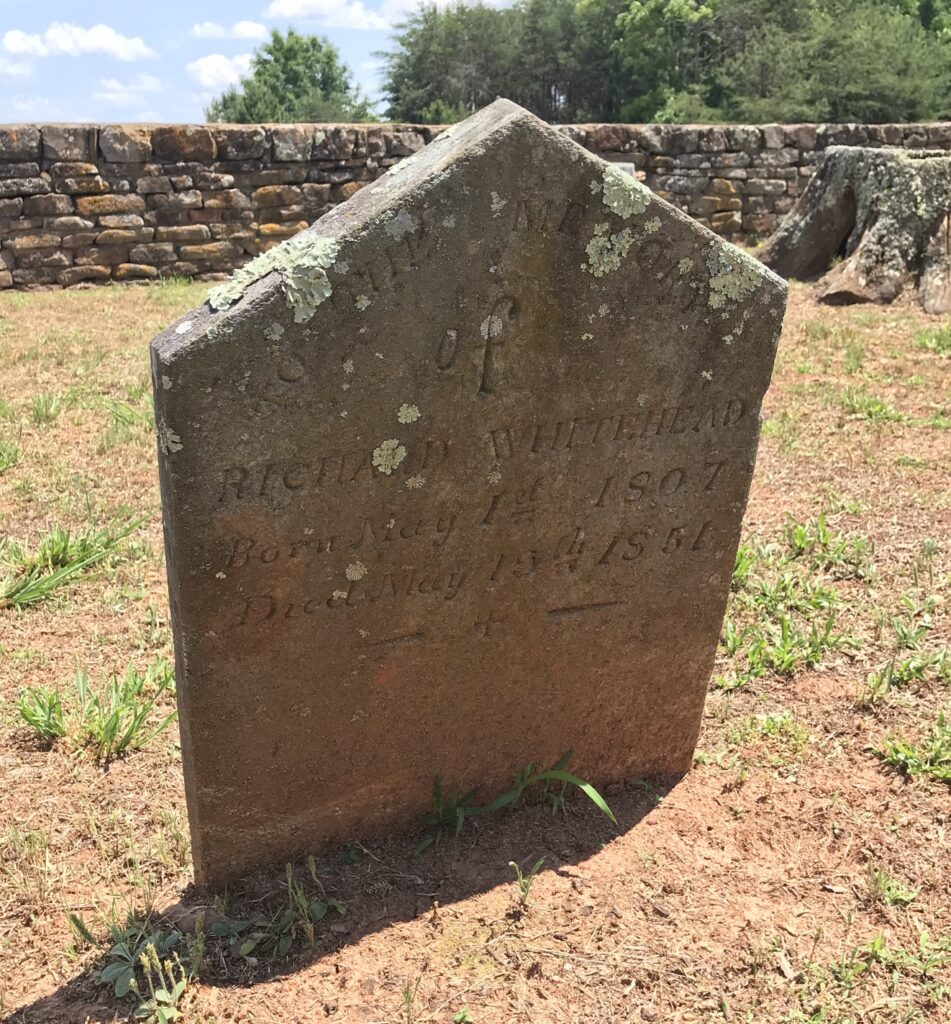
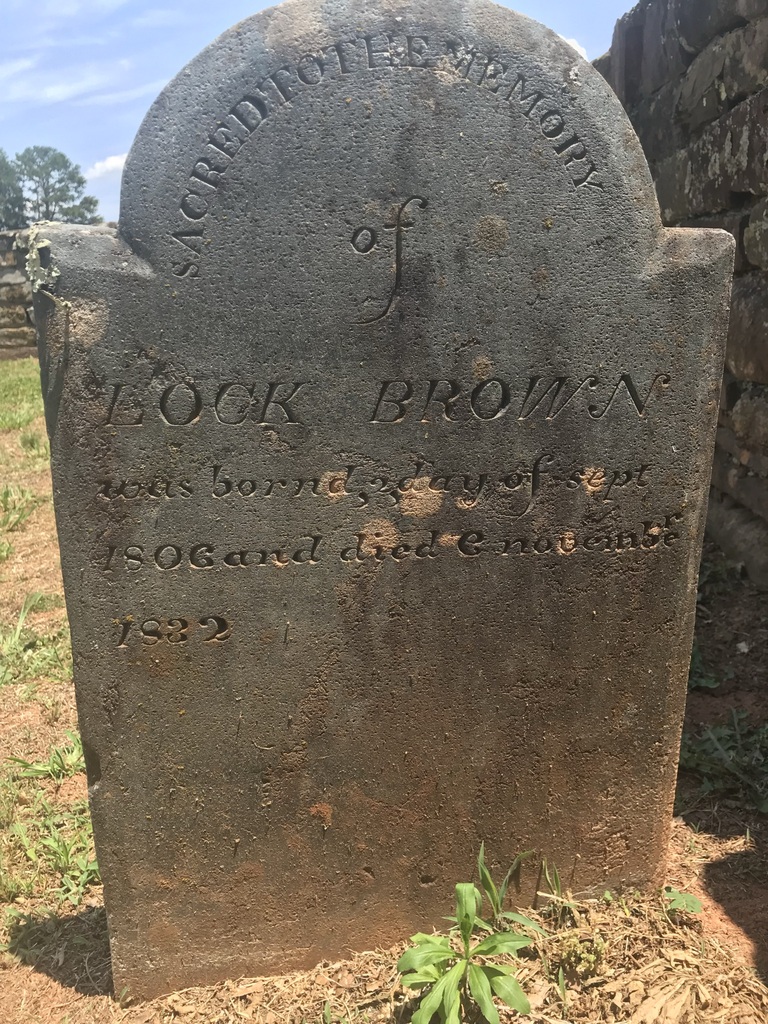
The grave of Lock Brown, son of John E. Brown. It features a unique vernacular inscription that reads: “LOCK BROWN was bornd, 2, day of sept 1806 and died 9 november 1832.” This stone displays a notable usage of the term “borned,” which is still a part of the local dialect with some older residents. It also features a backwards number nine and a scrunched letter r over “november.” This burial is among the oldest dated stones in the yard and is in a wonderfully legible condition to be nearly two hundred years old.
